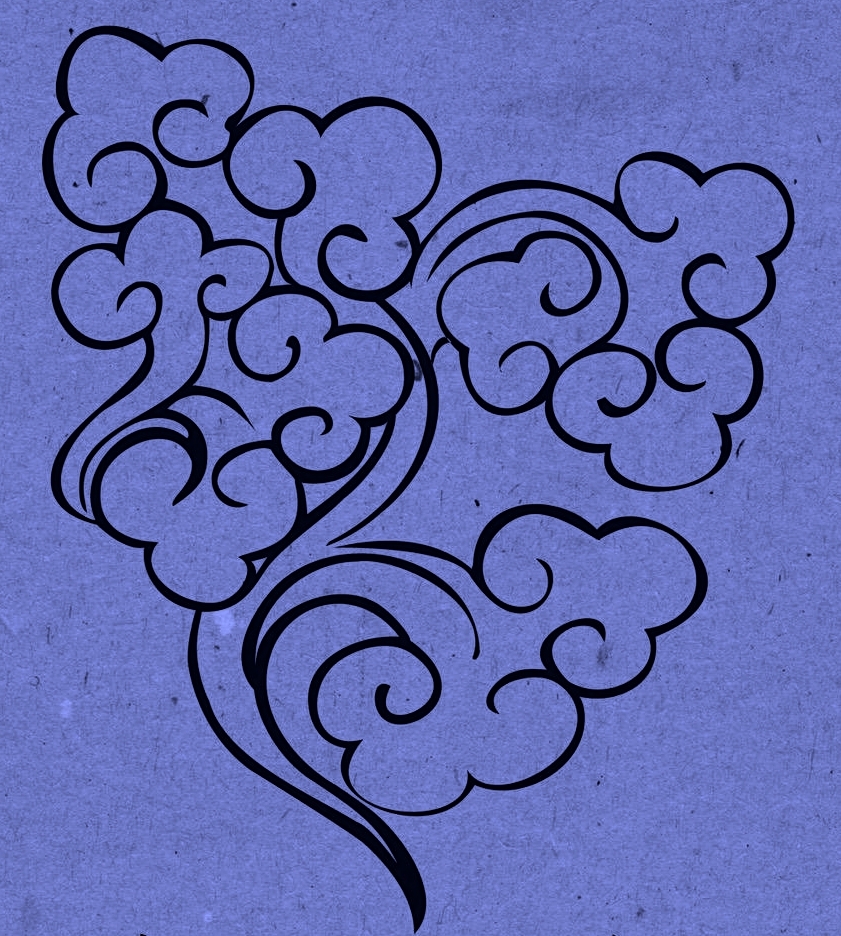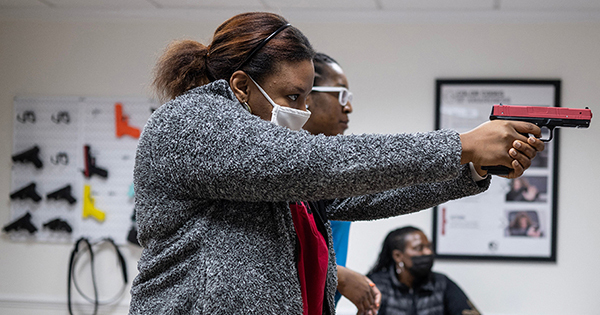BASF is one of the US’s largest public gun ranges. Under a tin roof, a line of concrete shooting tables stretches into the distance. Behind them, the shooters, some with their families (children are admitted from the age of five)
Ben Avery Shooting Facility (BASF)
‘I bought my first gun in 2016, when Donald Trump was elected,’ said Colette Jennings, an African American in her 30s living in Tucson. ‘Like many Black people, I was worried by his attacks on African Americans, and the hate speech his supporters posted on social media.’ She has carried a gun ever since. After the police killing of George Floyd in May 2020 triggered a wave of Black Lives Matter protests across the country, Jennings campaigned in defence of the second amendment to the US constitution, which guarantees the right to keep and bear arms. Jennings belongs to the National African American Gun Association (NAAGA), whose membership rose by more than 25% (mostly women) in 2020. The association was founded in 2015 and today has nearly 50,000 members, even though gun ownership is problematic for Black people in the US. Jennings’s brother was once arrested for carrying one in his bag; few whites have a similar experience.
In 1967 Ronald Reagan, as governor of California, signed into law the Mulford Act, which prohibited open carrying of loaded firearms without a permit. It was mainly intended to disarm members of the Black Panther organisation who were quite legally patrolling the city of Oakland (California), ‘policing the police’. Angela Stroud, a sociologist at Northland College in Wisconsin, believes gun control legislation has always been used to oppress African Americans (3), for instance to prevent slave rebellions on plantations and to deny equal opportunity, through the ‘Jim Crow’ laws that enforced racial segregation between 1877 and 1964.
A total of 19,613 homicides involving firearms were recorded in the US in 2020 (5), an unprecedented year-on-year increase of 25%. The number of homicides topped 20,000 in both 2021 (21,068) and 2022 (20,390), and with mass shootings (involving four deaths or more) also on the increase, African Americans are not the only ones buying guns. Philip Gomez, a Mexican American studying law at the University of California, Berkeley, founded the Latino Rifle Association (LRA) after a gunman killed 23 people at a Walmart in El Paso, Texas in a specifically anti-Latino attack. Gomez says the LRA allows people to learn how to defend themselves without having to join gun clubs that fly the Confederate flag and whose members have ‘Build the Wall’ stickers on their weapons (referring to Trump’s barrier on the US-Mexico border).
The LGBTQ community are organising too, says Jason D, president of the Phoenix chapter of the Pink Pistols, a gun club for sexual and gender minority people. We met him after a practice session at the Shooter’s World gun range, in a poor industrial suburb of Phoenix: ‘I don’t like guns and I don’t like shooting, but this is one of the few places where we don’t get harassed and members of my community are accepted. We come here once a week.’ He reeled off a list of homophobic and transphobic shootings in recent years, the deadliest of which claimed 49 lives at a gay nightclub in Orlando, Florida, in 2016: ‘I have no choice but to carry a weapon at all times.’
Sociologist David Yamane of Wake Forest University, author of the Gun Culture 2.0 blog, explains that while the typical gun owner in the US is white, elderly, male, politically conservative, rural and from the Southern states, gun culture has always had a wider following. ‘Out of 50 million gun owners, around 20 million are traditional conservatives, then there’s the same number of moderates, and the rest identify as liberals [in the US sense of progressives]. This group includes a large proportion of first-time owners. It’s very diverse: besides socialists and anarchists, there are libertarians and some more conservative democrats. There are also people who distrust government in general, especially African Americans and Latinos.’
What exactly does the second amendment say? ‘A well regulated Militia, being necessary to the security of a free State, the right of the people to keep and bear Arms, shall not be infringed.’ In recent decades, the NRA has promoted a broad interpretation of that right – as the right to defend one’s individual or political freedom oneself. The NRA’s influence comes from the fact that it has five million members across the US and a network of 14,000 affiliated clubs, associations and businesses.
When the NRA was founded in 1871, it was mainly concerned with improving its members’ hunting and target-shooting skills; it only became a political lobby in the 1960s.
In the 18th century the right to bear arms as guaranteed by the constitution was ‘neither cultural nor individualistic, but political and emancipatory’. Its appropriation by Republican conservatives significantly changed interpretations of the second amendment, on which there are now two competing schools of thought. The first takes ‘a well regulated militia’ as meaning militias belonging to individual states, which need protecting against the Federal government. The second interprets the amendment as guaranteeing an inalienable individual right, recognised by law – especially the 1986 Firearm Owners Protection Act (signed into law by Reagan, whose 1980 election campaign the NRA had supported) and the Supreme Court’s 2008 ruling on District of Columbia vs Heller.
The view that the purpose of bearing arms is to protect oneself against criminal threats or possible government abuses – and in fact against any attempt at collective regulation (11) – became predominant at the time of the ‘conservative revolution’ within the Republican Party, based on state withdrawal and a return to traditional values. This political interpretation of the second amendment not only reduces the bearing of arms to an individual right of self-defence, but makes it a God-given right that cannot and must not be regulated.



I love seeing this kind of thing. Don’t let Republicans be the only ones who benefit from the 2nd amendment.
Big true.
Luckily we are living in a golden age of handguns, there are many to pick from, and prices range from ~$250 to $1000s. Shapes, sizes, caliber, style/color, features are plentiful to chose from. With every passing year the selection to pick from only gets better.